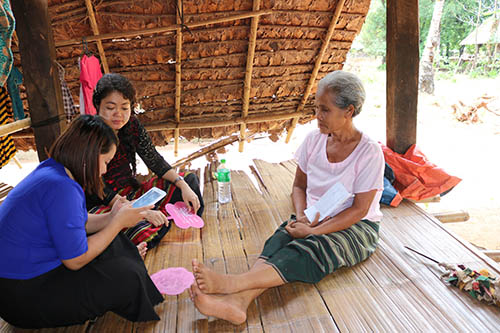
Read about NCA's latest important study in Myanmar about how communities can become more climate resilient.

Myanmar is one of the most vulnerable countries in the world to climate change and various kinds of natural disaster. Climate change has negative affects on Myanmar's socio-economic sectors such as agriculture, forest, biodiversity, coastal zones, public health and water resources. Myanmar is an agricultural country and the water and agriculture sectors are critical for the country's economic prosperity.
The joint office and programme of DCA-NCA in Myanmar has therefore conducted a baseline study on Climate Change and Livelihood.
The study covers our planned intervention areas in two states, Kayin (in the south east part) and Magway (in the central part of the country).
The base line study sets clear targets relating to the planned outcome of DCA- NCA Myanmar's mandate of Saving Lives and Building Safer and Resilient Communities. The setting of targets is crucial to measure outcomes and outputs accurately.
The dominating climatic hazards are the drought in Magway and the flood in Kayin. Some communities have contingency plans, Disaster Risk Reduction (DRR) and climate resilience functions in place.
However, these plans were taken less seriously by communities that were not frequently affected by disasters. It is important that such communities are reminded about the risks that they could face and how important their involvement is in the planning of DRR practices, such as regular disaster drills and post-disaster action plans such as food storage and evacuation protocols.
Pre-disaster plans / disaster mitigation strategies have often been given less attention, but are just as important in helping communities become more resilient. Efforts to mitigate and reduce risks (e.g. soil protection, water diversion to reduce flood risk) should be explored and introduced. Encouraging sustainable agricultural practices and promoting risk mitigation activities using local material and affordable inputs are highly recommended.
The baseline data collected in this study will be utilized as a reference for project planning, target setting, and for monitoring mid-term and final evaluations. This will form part of the reference points to be discussed with partners during the Annual Reflection Workshops.
Published: